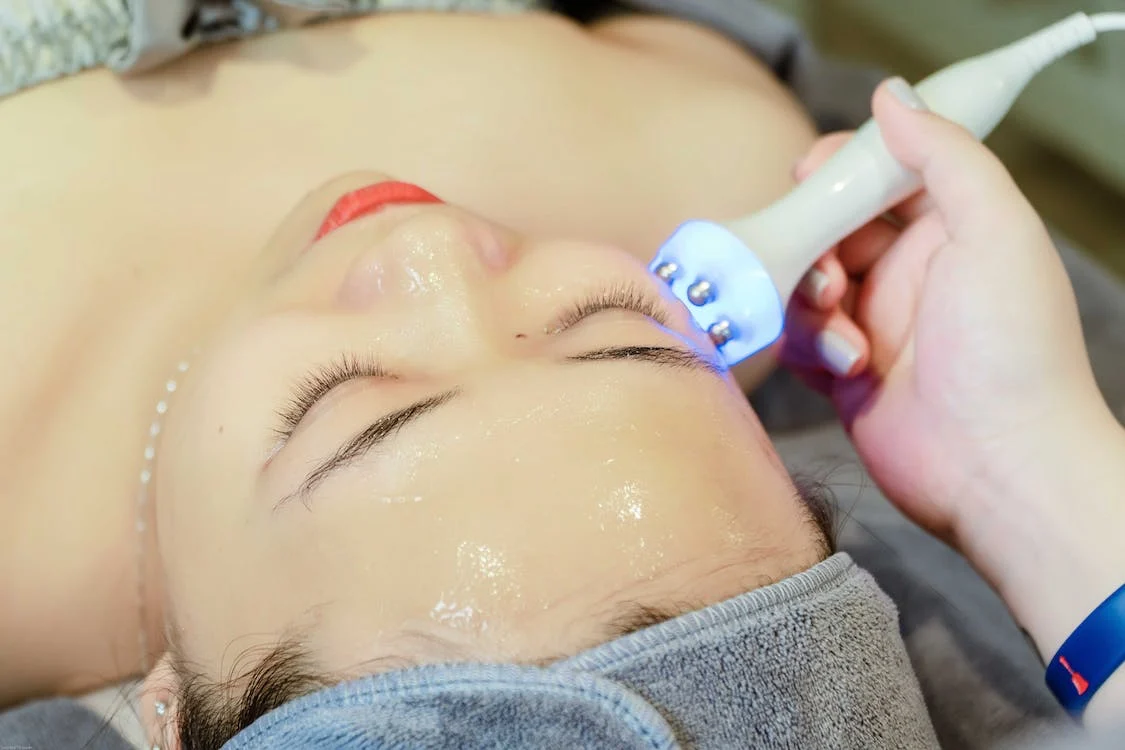What is Ultrasonic Cavitation?
Ultrasonic cavitation is a phenomenon that occurs when high-frequency sound waves, typically in the ultrasonic range (above 20 kHz), create tiny, rapidly expanding and collapsing bubbles in a liquid medium. These bubbles, also known as cavities, form and implode due to the alternating high and low-pressure waves generated by the ultrasound equipment.
How Does Ultrasonic Cavitation Work?
The process of ultrasonic cavitation can be summarized in a few key steps:
- Generation of Sound Waves: Specialized ultrasonic equipment emits high-frequency sound waves into a liquid or tissue.
- Formation of Microbubbles: These sound waves create microbubbles within the liquid or tissue. These bubbles grow in size as they absorb energy from the ultrasound waves.
- Bubble Implosion: Eventually, these microbubbles reach a critical size and implode. During this implosion, they release a significant amount of energy in the form of heat, pressure waves, and microjets.
- Effects on Surrounding Medium: The energy released during the bubble implosion can have various effects on the surrounding medium. This can include breaking down particles, emulsifying substances, and even causing cellular disruption in biological tissues.
The Advantages of Ultrasonic Cavitation
1. Non-Invasive
Ultrasonic cavitation is non-surgical, meaning it doesn’t require incisions, anesthesia, or a prolonged recovery period. Patients can typically return to their daily activities immediately after the procedure.
2. Targeted Fat Reduction
This method allows for precise targeting of specific areas, such as the abdomen, thighs, love handles, or arms, where stubborn fat tends to accumulate.
3. Pain-Free
Most patients report little to no discomfort during the procedure. Unlike some other fat reduction methods, ultrasonic cavitation is virtually pain-free.
4. Natural-Looking Results
The gradual nature of fat elimination means that the results appear natural, avoiding the risk of sudden, noticeable changes.
5. Minimal Side Effects
Side effects are generally mild and temporary, including slight redness or swelling at the treatment site, which typically subsides within a few hours.
Applications of Ultrasonic Cavitation
Ultrasonic cavitation finds applications in a wide range of fields:
1. Medical and Surgical Procedures
- Liposuction: Ultrasonic cavitation is used in ultrasonic liposuction to break down fat cells, making them easier to remove.
- Dental Procedures: In dentistry, ultrasonic cavitation aids in removing plaque and tartar from teeth.
2. Cosmetic and Aesthetic Treatments
- Cellulite Reduction: It is used in non-invasive procedures to target and reduce cellulite by breaking down fat cells.
- Skin Rejuvenation: Ultrasonic cavitation can stimulate collagen production, leading to improved skin texture and tone.

3. Industrial Cleaning and Processing
- Cleaning Applications: Ultrasonic cavitation is used for cleaning delicate items like jewelry and electronic components, removing contaminants without causing damage.
- Emulsification: In the food industry, it helps create stable emulsions, improving the texture of products like mayonnaise and salad dressings.
4. Pharmaceuticals and Drug Delivery
- Nanoparticle Synthesis: Ultrasonic cavitation is employed to produce nanoparticles for drug delivery systems, enhancing drug bioavailability.
5. Ultrasonic Welding
- Bonding Plastics: In manufacturing, ultrasonic cavitation is used for ultrasonic welding of plastics, creating strong and precise bonds.
Also Read-Amika Thermal Brush Mastering Your Gorgeous Looks in 2023
Safety Considerations
While ultrasonic cavitation has numerous applications, it’s essential to use this technology with care. The intensity of the ultrasound waves and the choice of equipment should be appropriate for the specific application to avoid any potential harm, especially in medical and cosmetic procedures.
In conclusion, ultrasonic cavitation is a versatile technology with a wide range of applications across various industries. Its ability to create controlled cavitation and release energy makes it a valuable tool for tasks ranging from fat reduction to cleaning and beyond. As technology continues to advance, we can expect even more innovative uses for ultrasonic cavitation in the future
Future Developments and Research
The field of this cavitation continues to evolve, with ongoing research and development aimed at expanding its capabilities and applications. Some of the exciting developments and areas of interest include:
1. Cancer Treatment
Researchers are exploring the use of ultrasonic cavitation as a potential treatment for cancer. High-intensity focused ultrasound (HIFU) is being investigated for its ability to precisely target and destroy cancer cells while minimizing damage to surrounding healthy tissue.
2. Drug Delivery
Ultrasonic cavitation holds promise for improving drug delivery systems. By using cavitation to enhance the penetration of drugs into specific tissues or cells, researchers aim to make drug therapies more effective and efficient.
3. Environmental Cleanup
In environmental science and remediation, ultrasonic cavitation is being studied for its potential to break down pollutants and contaminants in water and soil. This application has the potential to contribute significantly to environmental cleanup efforts.
4. Material Processing
Industries such as metallurgy and semiconductor manufacturing are exploring how ultrasonic cavitation can be applied to refine materials, create nanostructures, and improve the quality of finished products.
The Treatment Process
During an ultrasonic cavitation session, a trained technician will apply a handheld device to the target area. This device emits the high-frequency ultrasound waves, and the entire procedure typically takes about 30 to 60 minutes, depending on the size of the area being treated.
Patients may require multiple sessions to achieve their desired results, spaced several weeks apart. The number of sessions depends on individual factors such as the amount of fat to be reduced and the patient’s response to the treatment
Safety and Regulations
As this cavitation technology continues to advance, it’s important to establish safety guidelines and regulations to ensure its responsible use. Government agencies and industry standards organizations are working to set standards and safety protocols for various applications, especially in the medical and cosmetic fields.
Conclusion
This cavitation is a remarkable technology with a diverse range of applications across medicine, industry, and research. Its ability to create controlled cavitation and release energy has opened up new possibilities in fields as varied as cancer treatment, drug delivery, and environmental cleanup. As research and development efforts continue, we can expect to see even more innovative uses for ultrasonic cavitation emerge in the coming years.
However, it’s crucial to approach this technology with caution, especially in medical and cosmetic procedures, to ensure the safety and well-being of individuals. As our understanding of this cavitation deepens, we can harness its potential for both practical and groundbreaking advancements in science and industry.
For More-What to Know About Ultrasonic Cavitation.





